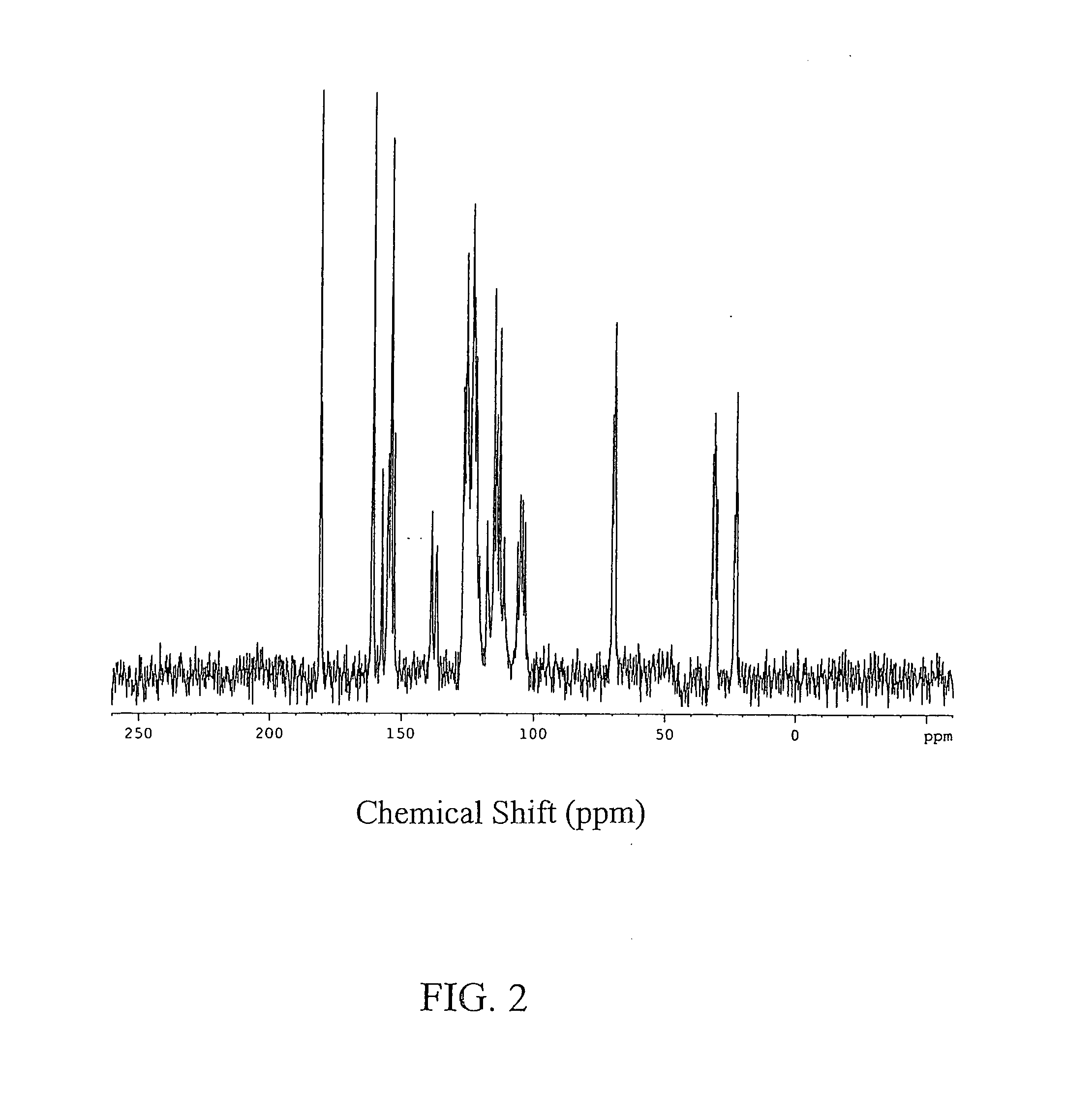Antidiabetic bicyclic compounds
a technology of antidiabetic bicyclic compounds and antidiabetic peptides, which is applied in the field of tricyclic compounds, can solve the problems of increased and premature morbidity and mortality, inadequate insulin-mediated repression of lipolysis in adipose tissue, and insufficient insulin-mediated activation of uptake, oxidation and storage of glucose in muscle,
- Summary
- Abstract
- Description
- Claims
- Application Information
AI Technical Summary
Benefits of technology
Problems solved by technology
Method used
Image
Examples
example 1
[0192]
Step 1.6-[2-Chloro-4-(trifluoromethyl)phenoxy]-1-benzofuran. To a stirred solution of 1-benzofuran-6-ol (418.5 mg, 3.1 mmol) in 6 ml of DMF was added 3-Chloro-4-fluorobenzotrifluoride (681.4 mg, 3.4 mmol) and cesium carbonate (1.5 g, 4.7 mmol). The reaction mixture was heated at 80° C. for 2 hours. After cooling to room temperature, it was diluted with ethyl acetate, washed with water (2×) and brine, dried over magnesium sulfate, filtered and concentrated. The crude product was purified on a silica gel column, eluting with ethyl acetate (0-30%) in hexane. The final product was collected as colorless oil. 1H NMR (CDCl3, δ ppm): 6.8 (s, 1H), 7.0 (two d, 2H), 7.2 (s, 1H), 7.4 (d, 1H), 7.6 (d, 1H), 7.7 (s, 1H), 7.8 (s, 1H).
Step 2. Ethyl 4-[2-chloro-4-(trifluoromethyl)phenoxy]-1a,6b-dihydro-1H-cyclopropa[b][1]benzofuran-1-exo-carboxylate. To a stirred solution of the above phenoxybenzofuran (250 mg, 0.80 mmol) in dichloromethane (4.5 ml) was added rhodium acetate dimer (42 mg, 0.1 ...
example 2
[0193]
Step 1. [2-Methyl-4-(trifluoromethyl)phenoxy]-1-benzofuran. To a stirred solution of 1-benzofuran-6-ol (309 mg, 2.3 mmol) in dioxane (6 mL) and DMF (12 mL) was added 2-methyl-4-trifluoromethylphenyl iodide (600 mg, 2.3 mmol), copper iodide (108 mg, 0.57 mmol), dimethylglycine hydrochloride (243 mg, 1.7 mmol), and cesium carbonate (1.88 g, 5.8 mmol). The reaction was stirred at 110° C. for 22 h. After cooling to room temperature, solvents were removed in vacuo. The residue was dissolved in ethyl acetate, washed with water and brine, dried and concentrated. The crude product was purified on a silica gel column, eluting with ethyl acetate (0-10%) in hexanes. The final product was collected as a slightly yellow oil.
Step 2. 4-[2-Methyl-4-(trifluoromethyl)phenoxy]-1a,6b-dihydro-1H-cyclopropa[b][1]benzofuran-1-exo-carboxylic acid. Follows the method of Example 1, Steps 2 and 3. MS: 349.2 (M−1).
example 3
[0194]
Step 1. 2-(Difluoromethoxy)-1-fluoro-4-trifluoromethylbenzene. To a stirred solution of 2-fluoro-5-trifluoromethyl-1-phenol (9.9 g, 54.9 mmol) in 100 ml of DMF (100 mL) and water (10 mL) was added sodium chlorodifluoroacetate (20.9 g, 137.2 mmol) and cesium carbonate (26.8 g, 82.3 mmol). The reaction mixture was stirred at 100° C. for 2 hours. After it cooled to room temperature, it was diluted with ethyl acetate (700 ml), washed with water (3×) and brine, dried over magnesium sulfate, filtered and concentrated. The crude product (colorless oil, volatile) was used for the next step without further treatment. 1H NMR (CDCl3, δ ppm): 6.6 (t, 1H), 7.3 (m, 1H), 7.6 (m, 2H).
Step 2. 6-[2-(Difluoromethoxy)-4-(trifluoromethyl)phenoxy]-1-benzofuran. To a stirred solution of 1-benzofuran-6-ol (13.4 g, 100 mmol) and 2-(difluoromethoxy)-1-fluoro-4-trifluoromethylbenzene (29.9 g, 130 mmol) in DMF (300 mL) was added cesium carbonate (65.2 g, 200 mmol). The reaction mixture was stirred at 75°...
PUM
| Property | Measurement | Unit |
|---|---|---|
| Structure | aaaaa | aaaaa |
Abstract
Description
Claims
Application Information
 Login to View More
Login to View More - R&D
- Intellectual Property
- Life Sciences
- Materials
- Tech Scout
- Unparalleled Data Quality
- Higher Quality Content
- 60% Fewer Hallucinations
Browse by: Latest US Patents, China's latest patents, Technical Efficacy Thesaurus, Application Domain, Technology Topic, Popular Technical Reports.
© 2025 PatSnap. All rights reserved.Legal|Privacy policy|Modern Slavery Act Transparency Statement|Sitemap|About US| Contact US: help@patsnap.com



